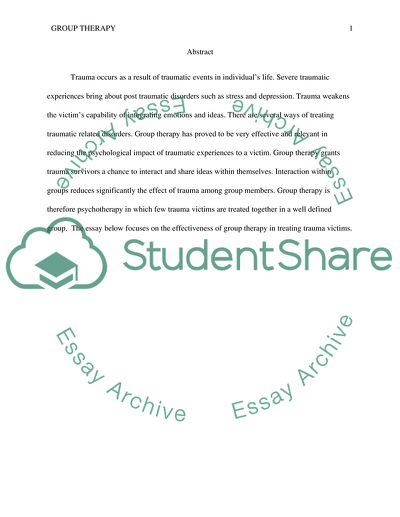Cite this document
(How Effective is Group Therapy in Treating Trauma Victims Research Paper, n.d.)
How Effective is Group Therapy in Treating Trauma Victims Research Paper. Retrieved from https://studentshare.org/psychology/1775478-how-effective-is-group-therapy-in-treating-trauma-victims
How Effective is Group Therapy in Treating Trauma Victims Research Paper. Retrieved from https://studentshare.org/psychology/1775478-how-effective-is-group-therapy-in-treating-trauma-victims
(How Effective Is Group Therapy in Treating Trauma Victims Research Paper)
How Effective Is Group Therapy in Treating Trauma Victims Research Paper. https://studentshare.org/psychology/1775478-how-effective-is-group-therapy-in-treating-trauma-victims.
How Effective Is Group Therapy in Treating Trauma Victims Research Paper. https://studentshare.org/psychology/1775478-how-effective-is-group-therapy-in-treating-trauma-victims.
“How Effective Is Group Therapy in Treating Trauma Victims Research Paper”, n.d. https://studentshare.org/psychology/1775478-how-effective-is-group-therapy-in-treating-trauma-victims.


